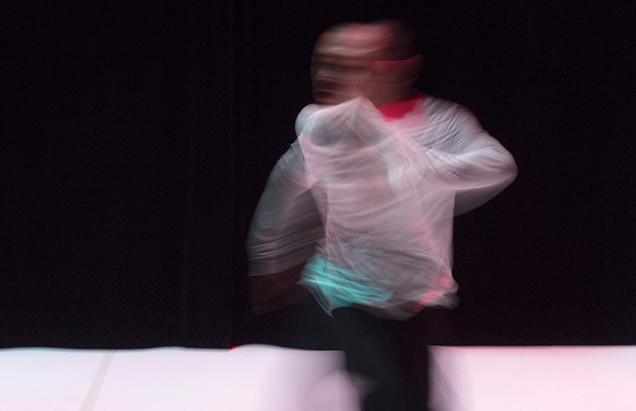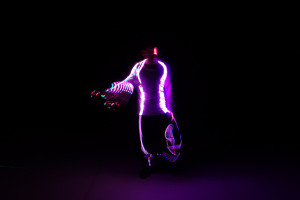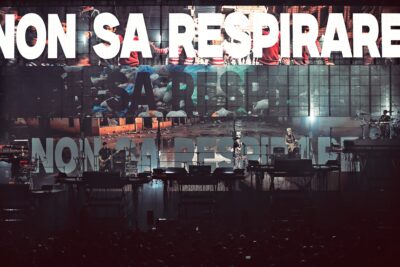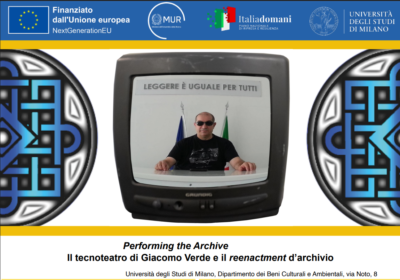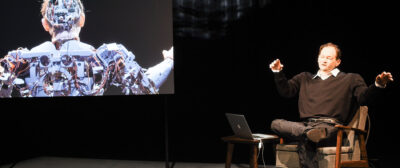Hiroaki Umeda is a choreographer and a multidisciplinary artist now recognized as one of the leading figures of the Japanese avant-garde art scene. Since the launch of his company S20, his subtle yet violent dance pieces have toured around the world to audience and critical acclaim. His work is acknowledged for the highly holistic artistic methodology with strong digital back ground, which considers not only physical elements as dance, but also optical, sonal, sensorial and, above all, spatiotemporal components as part of the choreography. Based on his profound interest in choreographing time and space, Umeda has spread his talent not only as a choreographer and dancer, but also as a composer, lighting designer, scenographer and visual artist.
<iframe src=”https://player.vimeo.com/video/56433515″ width=”500″ height=”281″ frameborder=”0″ webkitallowfullscreen mozallowfullscreen allowfullscreen></iframe>
In this optical dance piece split flow, the artist juxtaposes two distinct physical conditions, dynamic and static, in order to visualize the duality within reality. This piece, which first appeared as a light installation commissioned by Van Abbemuseum (Eindhoven, Netherlands) in 2011, is an experiment in expressing velocity with strokes of light. In the installation, a high luminance laser device was applied to project three primary colors of light—red, green, and blue—in split-second velocity, which then appeared to human eyes in the color of white. However, when viewers walked through that static space lined with white bars, the achromatic light transiently split into three colors. Through the dynamic intervention of the body into the static space, a different reality came into existence. Acknowledging the importance of the corporeal element in the installation, Umeda decided to create a dance piece under the same concept. In split flow dance version, Umeda develops the lighting design as an extension of the installation; and on top of all the tiers of light, adds an extra layer of fluid movement which the artist calls as ‘Clarified Sensation Movement’: movement devoid of redundant noise. Through the mediation of this physical movement perfectly in tune with the luminous environment, a reality, which was invisible in static condition, becomes visible. The audience will be watching diverse range of visualized velocity through the physical conduit of the artist. split flow challenges the human limit of the visible spectrum, where audience encounters a fecund reality that could only be visualized through physical movements.

